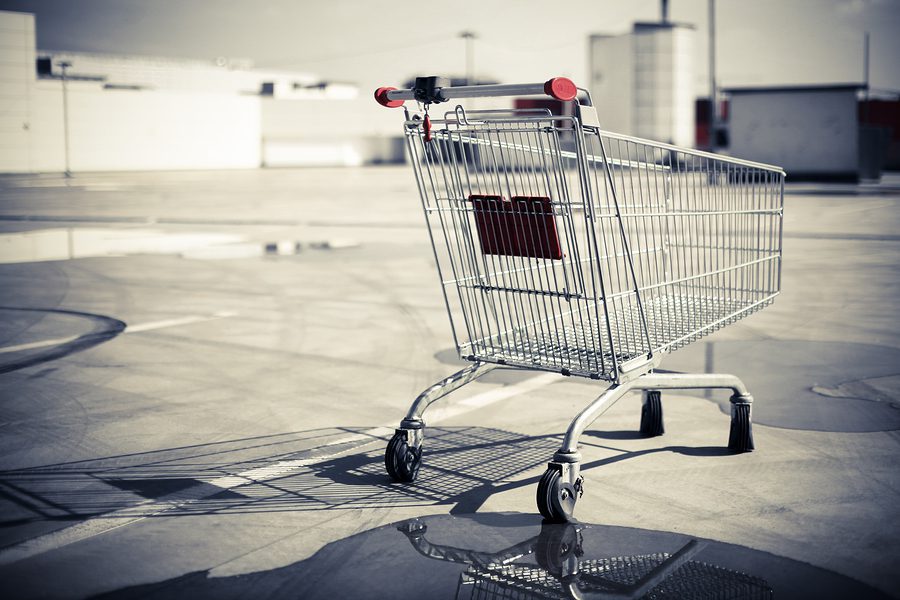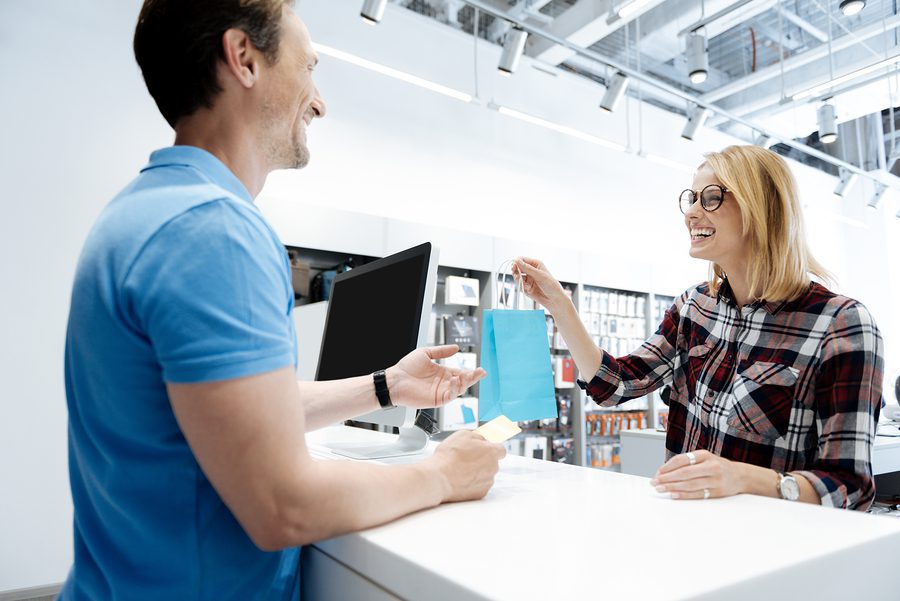
Did you know that back in the stone age of ecommerce (2013), email marketing had a 4300% ROI?
That’s insane.
No wonder ecommerce sites began popping up across the globe soon after. Today, you can buy everything online, from books to baby wipes.
But is email marketing still relevant in 2018? The inbound marketing rock stars at HubSpot think so.
While returns aren’t quite as high today, Salesforce reports that every dollar spent on email can bring in an additional $38.
What happens when you send an email? Do you hear crickets? What about two emails? Radio silence?
Email marketing is still very relevant. But the secret to cutting through the inbox clutter lies in email sequences, not one-off email messages.
We came up with this handy guide that provides four killer email sequences for ecommerce sites. Let’s dive right in.
Sequence #1: The Abandoned Shopping Cart

It’s exciting to watch your first customers move through the ordering process. But, between the order and checkout process, sometimes things go wrong. Customers get distracted, shopping carts break, or the user experience is too complicated.
How do you correct this problem? Enter The Abandoned Shopping Cart Email Sequence.
The timing of your emails depends on a number of variables, but it’s best to send the first email right away.
Since relevant subject lines are the best way to get your email opened, we suggest using a four-email sequence (in this exact order):
- Did you forget something? (sent within one hour after cart abandonment)
- Free Shipping (sent within 24 hours after first email)
- Special Offer (sent within two days after second email)
- Offer Expiring (sent within 24 hours of third email)
Let’s break each of these emails down:
-
Did you forget something?:
Usually a customer must create an account on your website to place an order, which is how an email address is acquired. Yes, they should have the option to checkout as a guest without creating an account. But if you’re sending an email, make sure you get their permission to do so. If you’re collecting first names with email addresses (and you should), you can also personalize the subject line to include their name.
-
Free Shipping:
If you have a minimum purchase total for free shipping, shoppers might need a little incentive — like free shipping — to complete the transaction, especially if they don’t buy the minimum. This email provides an extra push to get them moving in the right direction.
-
Special Offer:
Free shipping is a special offer, but if they’re over the minimum purchase total, it won’t make a difference. How about a discount on the first order? Make it clear that it’s time sensitive and they only have a limited time to take advantage of it.
-
Offer Expiring:
This email adds urgency. If the offer is going to expire in 24 hours or less, why not tell them about it? You don’t want to annoy people with a bunch of emails, so make this the last one in the series.
Sequence #2: Thanks for Shopping With Us

If your customer doesn’t abandon their cart, your first email sequence will go something like this:
- Purchase confirmation (sent within one hour of purchase)
- Shipping confirmation (sent within one hour of shipment preparation)
- Your package is on its way (sent one business day AFTER package is dropped off at carrier)
- How was your experience? (within 24 hours of package delivery)
-
Purchase confirmation:
Pretty straightforward. You can be as formal as you want, but why not inject a bit of personality? Just make sure you include the pertinent details like order number, shipping address, item, total price, and what they should expect regarding what happens next. FitBit does a great job of adding character in their order confirmation emails by adding the line, “And we’re just as excited as you are” in their message.
-
Shipping confirmation:
Just another boring transactional email? Wrong. Shipping confirmation emails give you the perfect opportunity to build excitement about delivery and share important details like tracking numbers.
-
Your package is on its way:
This tells customers where to track and how to get notifications about their order. New tech like Facebook Messenger bots and SMS notifications are great, but some customers will prefer to keep tabs on purchases via your website. The purpose of this email is two-fold. Shipping confirmations provide tracking numbers to customers but are often sent before a package leaves the building. This email shows the customer that the package has left and where to go online to get updates, and provides another opportunity for customers to get excited about their package arriving soon.
-
How did you like your shopping experience?:
Not to be confused with a request for feedback (which we’ll go over next). This is to find out if your customer is satisfied with their experience on your website, the checkout process, shipping speed, and customer service. A simple, user-friendly way to do this is by creating a survey on Google Forms or
SurveyMonkey and linking to it in an email. If you’re having trouble getting responses, consider offering a discount or other reward (such as free shipping) in exchange for taking the survey.
Sequence #3: Feedback Request

It’s important to get feedback from as many customers as possible (especially the first ones), but good timing is necessary.
Yes, you want your customers to shout your praises, but don’t ask for their opinions too soon.
To make it easy for customers to leave you reviews, include clearly labeled buttons in your emails that link directly to the review section of your social media, Google My Business, Amazon page, or wherever your product reviews live.
Providing incentives like free products or discounts on future orders often get a better response. Make sure you mention the incentive in the subject line to boost your open rate.
May we suggest a new approach? This ecommerce email sequence is for a customer who has already gone through Sequence #1 OR Sequence #2. Too many emails at the same time will confuse people, so begin this sequence within two days after completion of Sequence 2, and time them to be 24 hours to 3 days apart. Have a look:
- We hope you liked your purchase (within 2 days of completion of Sequence #2)
- Connect with us on social media (24 – 72 hours after first email)
- Leave a review (24 – 72 hours after second email)
- What do you think? (48 – 72 hours after third email)
-
We hope you liked your purchase:
Not everyone starts using their purchased products right away. You already know from the last sequence how the shopping experience went, so this sets the stage to ask for a review later.
-
Connect with us on social media:
Shoppers may not be aware of your brand’s social media presence, so provide them an opportunity to know and interact with you on Facebook, Instagram, Twitter, and anywhere else you hang out. You may get a review without even asking for one.
-
Leave a review:
Ask your fans to post reviews on the platform of their choice. Social media reviews are a great way to earn referral business, but other sites provide great visibility on mobile (think Google) or SEO value (like Amazon). Consider carefully where you want your customers to leave a review and don’t overwhelm them with too many options.
-
What do you think?:
You may want to send a request for feedback that is not posted publicly, especially if you’re testing out new products or processes on your site. To do this, you can create a survey, include questions in an email (and encourage readers to hit Reply to answer), or provide a phone number they can call.
Sequence #4: Nurture Repeat Customers

You’ve convinced them to give your products a try. You’ve converted them into paying customers via your website (or the abandoned shopping cart emails). Now it’s time to delight them.
The following series is self-explanatory, but we’ll go into more detail below:
- Refer a friend discount (within 1 week after last email in sequence #3)
- It’s time to reorder! (optional; timing depends on how often customers order)
- We appreciate your business (within 24 hours of previous email)
- Become a VIP (optional; within 48 hours of previous email)
1. Refer a friend discount:
If you want referrals from happy customers, the easiest way to get them is to provide a discount to the customer and their friends. These offers spread like wildfire on social media, especially if you can give an affiliate link that makes it easier for them to share.
2. It’s time to reorder! (optional):
If you’re selling groceries or calendars, it’s safe to assume your customers will eventually need to buy more. Gently remind your customers when it’s time to re-stock. Subscription services also send reminders when a new box is shipping soon. Customers who subscribe to monthly services often make changes to their regular purchases, so this is a great time to remind customers that they can add more items to their box before it ships.
3. We appreciate your business:
Tell your customers you love them. Or heart them. Or value their business — use whatever tone is on brand with your business. Stay away from the hard sell and offer something for free, like a piece of exclusive content or a digital download.<
4. Become a VIP (optional):
If a customer makes it through all four email sequences, they probably won’t mind hearing from you regularly. A way to encourage customer loyalty is to include access to exclusive content and discounts. However, this step is optional. If you’ve maintained good open rates and even some repeat business from the previous three sequences, you know you’ve got a customer for life.
Dig Into Analytics
Email analytics are available at any point in your email marketing process. You can evaluate individual sequences to see where customers are opening, clicking, or unsubscribing.
Here’s what’s most important:
Deliverability:
Does your email make it to the intended recipient? If so, you won’t have any issues here. If not, you have a problem. These problems happen for a number of reasons, so you should take a deeper look at why emails are bouncing back or being blocked entirely.
Opens:
Opens can give you a good sense of who is receiving and looking at your emails. They don’t necessarily tell you who is reading, though, because an open doesn’t necessarily mean the content was looked at or engaged with. Experiment with different send times (or use OpenGen and Robly AI) to see when you get the most opens.
Clicks:
Once an email is opened, there should be trackable links that users click on. These links may connect a customer with their shopping cart, your Facebook page, or other sites. Setting up referrals in Google Analytics will help you analyze if goals are being met. Clicks are a much better measurement of engagement than opens.
Unsubscribes:
Once someone unsubscribes, you no longer have permission to email them. Consider setting up multiple list options for frequency (i.e., weekly, monthly, etc.) so that users can choose to reduce the frequency of emails rather than unsubscribing.
Keep Your List Clean:
Reconfirming your list about once a year is the easiest way to keep an email list healthy. There are all kinds of reasons why you need to do this. Ecommerce emails that aren’t read aren’t worth sending in the first place. Robly has an engagement management tool that lets you easily remove contacts who never open or click your emails.
Test Your Emails:
The easiest way to figure out what will perform the best is to send an A/B test. You create two variations of the same email and change either the subject line or the content/offer, and the winner (based on opens or clicks; you choose) gets sent to everyone. This is especially useful if you’re not seeing the results you want from one or more emails in a sequence.
Ready to Get Started?
Email marketing is not dead. In order to make it in today’s crowded marketplace, winning the battle for customer attention is easiest by maintaining a regular presence in their inbox.
By using email sequences (and Robly’s advanced email features like A/B testing and OpenGen), you’ll see your open rates soar and your profits increase in no time.
If you’re new to our site or haven’t tried us yet, get started with a 14-day free trial today!

